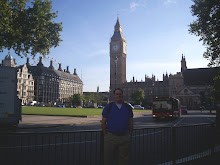An underrated figure in this book is Richard Nixon. Soon after his inauguration, Nixon had the opportunity to replace Chief Justice Earl Warren with Warren Burger and Justice Abe Fortas with Henry Blackmun. Later in his administration, Nixon was able to appointment two more justices, including future Chief Justice William Rehnquist. The Court went in a very short time from a liberal one to a more moderate one.
The next big change came when Samuel Alito replaced Justice O'Connor. A court that had stayed pretty moderate became a court with strong conservative leanings. Some of this is O'Connor's responsibility and the fact that she was a very political creature while on the court and she continued to hold to her Goldwater type Republican leanings. Through Toobin tries to obscure her role, and engages in some unwarranted pox on both houses interpretation, it is clear that O'Connor along with Justice Kennedy played a decisive role in placing George W. Bush in the White House. This allowed Bush to eventually replace O'Connor with the hardcore conservative Justice Alito.
Since Toobin wrote his book, both Justice Souter and Justice Stevens retired from the court. Obama replaced Souter with Justice Sonia Sotomayor and Obama is currently working on nominating Steven's replacement.
To change the direction of the Court, the key is to replace Republican appointees with Democratic ones. Nixon and Ford replaced 3 Democratic appointees with Republican ones and George H.W. Bush replaced one Democratic appointee. Only President's Clinton's replacement of Justice Blackmun with Justice Breyer allowed a Democrat to replace a Republican appointee.
Unless there is an unexpected change, for example Justice Kennedy leaving during the Obama administration, there is little chance for President Obama to drastically change the Court's direction. However, Sotomayer and the next justice will both replace Republican appointees. Though Stevens and Souter were both considered liberals, that was more because of the change of the composition of the Court. Obama will at least be able to place younger and more comprehensively liberal justices on the Court.
Forty two years have passed since the first term chronicled by Woodward. It took that long to change a liberal Court to a Conservative Court and it will probably take just as long to fully change direction. President Obama's has the chance to begin the long march back towards a jurisprudence that pays more heed to the voiceless and those on the margins. Jeffrey Toobin describe Chief Justice Roberts, and consequently the Roberts Court, this way:
"In every major case since he became the nation’s seventeenth Chief Justice, Roberts has sided with the prosecution over the defendant, the state over the condemned, the executive branch over the legislative, and the corporate defendant over the individual plaintiff. Even more than Scalia, who has embodied judicial conservatism during a generation of service on the Supreme Court, Roberts has served the interests, and reflected the values, of the contemporary Republican Party."
President Obama has the chance to be figure as important to the Court's history as Nixon. If Obama is willing, he can seize the opportunity to moderate a conservative march and start the process of starting a liberal one.
To understand how the stakes became so important and how Obama and the Supreme Court reached this moment of history then read both Toobin and Woodward.

No comments:
Post a Comment